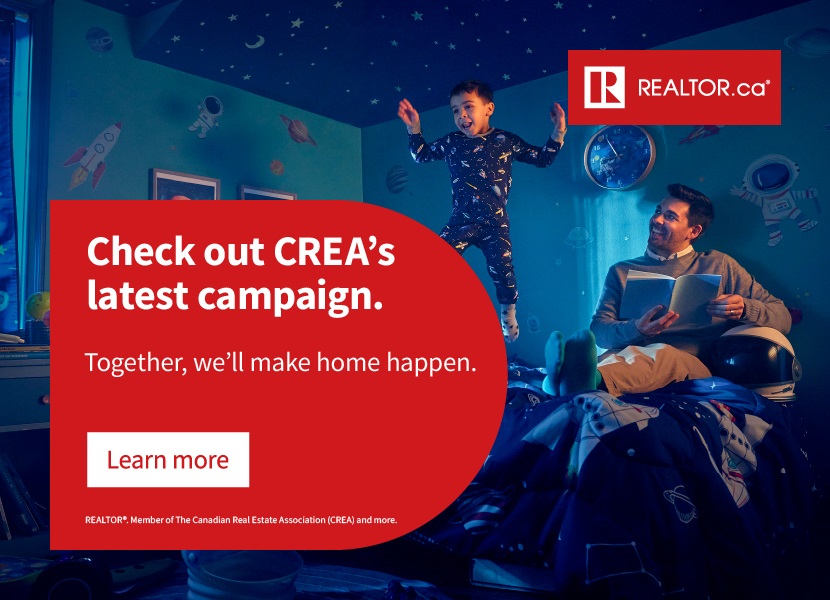North American buyers, sellers, landlords and tenants collectively spend billions on commissions when transacting. The collective amount of money flowing to real estate agents and brokers has attracted a variety of entrepreneurs hoping to tap into the vein of this massive consumer spend or hoping to get agents and their brokerages to spend some of their commission dollars on the entrepreneur’s latest product.
Time and time again, product after product has claimed to improve the lives of Realtors but has failed. Why? It’s easy to rely on traditional arguments for why good tech companies fail – poor timing, wrong “product-market fit”, poor leadership. However, like all things in life, it’s a bit more complicated than that. Especially if you’re intending to scale your product across borders.
To untangle the thorny web that catches proptech entrepreneurs off-guard, I turned to possibly the most plugged-in industry leaders in Canada – Lynette Keyowski, managing partner of REACH Canada and Mike McAra, director of REACH Canada, the Canadian expansion of the growth program for real estate technology companies created by Second Century Ventures, the investment team of the National Association of Realtors. Collectively, Keyowski and McAra have either built it, led it, tried it or invested in it. All of the advice shared in this article was generated from conversations with McAra and Keyowski. This is how good proptech goes bad.
Not appreciating the layers of complexity and various laws
Markets dominated by traditional industries that have been slow to innovate are believed to create an ecosystem rife for disruption by a nimble competitor who could provide a faster, cheaper solution and pivot when needed. Not true. Especially in the real estate industry.
This glosses over the variety of regulator restrictions, legal hurdles and gatekeepers you need to contemplate while making sure your product is not just better, but “unforgettably magnetic”. That phrase is borrowed from Adrian J. Slywotzky’s 2011 book Demand: Creating What People Love Before They Know What They Want. Slywotzky says the level of magnetism a product creates is the sum of it being functional, exceptional and emotionally appealing.
It’s not enough to identify a gap in the real estate industry and create a snazzy technology to fill it. Identifying and creating a solution is only part of the process in converting an idea into a viable business. You have to understand the entire landscape, the stakeholders and most importantly how they interact and what they want. The enterprising individual who sees a blue ocean of opportunity to improve the homebuying process typically has limited awareness that the ocean is filled with threats that can impede their business.
Canadian real estate has several layers you have to consider, especially if you want to include market data. Learning this takes time, and companies are typically not capitalized well enough to survive during this research period.
Because of the Realtor association structure in Canada at the local, provincial and national levels, you cannot do whatever you want to do. You can’t simply have access to data and use it how you must in order to create a better search experience. This is true even if you’re compliant with all privacy restrictions and anti-spam legislation.
If you want to build a tool that would help agents make better predictions about the value of a home, for example, you will likely need to access data controlled by real estate boards and ensure compliance with each one. In Canada you can do this a few ways. One is by becoming a brokerage, where you need to hire agents, operate the brokerage, recruit staff, incur significant startup costs, untangle the web of rules for how such data can be accessed and used and go through provincial governing bodies, local governing bodies and MLS compliance. And then maybe you can use the data in the way you intend. Oh, and you have to do this with every single real estate board or association.
Compare this to Uber or food delivery apps – data is directly from their users. One single push of a button takes care of anti-spam and privacy laws. That’s it.
If you’re not heavily funded and don’t have leadership that understands that this is a long haul, you’re likely not going to make it. Privacy, disclosure requirements and Canadian anti-spam legislation are much more robust in Canada than the U.S., which adds on tech development costs, exposure to cease and desists and fines.
A lack of funding and understanding the market
U.S. entrepreneurs looking to expand their business to Canada see a simple numbers game. The Canadian population is roughly one-tenth the size of the U.S. population, so they anticipate a tenth of the size of revenues. To make a profit, entrepreneurs think their investment and budget needs to scale in concert with the revenue projection.
But that’s not how technology works. To build a good product you have to spend the same amount, regardless of anticipated revenue size. So many entrepreneurs restrict development for what they believe are logical financial reasons but end up with a product that’s simply not good enough for people to “make the switch”.
Canadians also don’t live in the dark; if they see an inferior product to what’s available in the U.S. and given the closely knit Canadian real estate industry, they’ll reject it and your reputation will be marked.
Canada also has a much smaller venture capital industry than the U.S. With a Canadian version of the NAR REACH proptech scale program, Keyowski and McAra are leading the charge to build on the foundational ecosystem, working with industry to spur further innovation and investment in the space. By working at the intersection of real estate, technology and capital, they have a unique lens as to what is needed and how best to navigate the ecosystem for all.
For example, prior to REACH Canada, many Canadian proptech startups would attempt to access government grant programs that were largely stand-ins for early-stage venture and angel investment. Unfortunately, with a government grant, tech entrepreneurs often end up spending so much time writing these applications that the product doesn’t get the attention it deserves and can end up being subpar.
To build the best product, startups are taught to talk to their customers, learn, iterate and test, not write government grants. This one example of a seemingly good thing can be a wolf in sheep’s clothing. REACH stands to work with budding proptech firms to navigate these ins and outs, avoiding common pitfalls along the way.
Overestimating their understanding of the Canadian market and consumer
Brokerages in Canada run on thinner margins than U.S. counterparts. So, despite billions and trillions of dollars worth of real estate being sold, the real estate agent is not pocketing this revenue – much less, the broker/owner.
Many technology founders don’t appreciate this. In fact, commissions are on the decline, splits are more favourable for agents versus the brokerage than ever before, operating costs on brokerages are ballooning and membership fees for Canadian boards and associations to participate on the MLS system are much higher than comparatively in the U.S.
There is little desire to take on a technology that may hurt today’s profits in exchange for an easier process tomorrow. As a result, the market is flooded with tech startups that want a slice of an ever-shrinking pie. It’s hard to sell where there are many sellers and where buyers cannot afford what’s being sold.
Given these factors, products and services cannot be just as good as the incumbent. They must be magnetic. They must also clearly and directly show the relationship between the agent or the agent’s client adopting this product and the agent’s ability to make more money.
Other requirements for a technology to be a win in Canada: No downtime for training and no additional costs are incurred to replace an incumbent product with the new technology. Founders should ask themselves, “Am I really solving a hair-on-fire problem for my ideal customer?”
An example of a successful technology is virtual showings. Why? Because virtual showings were the only way during the pandemic, in many circumstances, that an agent could facilitate a close. Not being able to show a property is a hair-on-fire problem. Virtual showing software didn’t require the agent to train staff, take time from serving their clients to learn a new tool, switch service providers and break contracts. It was a click away. Virtual showing technology was also clearly tied to an agent’s ability to sell a home. It also replaced commuting, something that was much more time consuming and done manually (sans-technology). All these factors combined made the virtual showing technology much more appealing than the traditional method.
The lesson is that your solution has to be as simple as clicking a button, with no training required and must undeniably solve a key pain. It must also replace an arduous physical act. And it must have clear links to driving revenue.
It you’ve just entered the proptech industry and need direction, I suggest you first apply to REACH Canada. As a mentor to the organization’s past year’s graduates, I can attest to the fact that you will have access to the industry ecosystem, stakeholders and key players mentioned above, all of whom are willing to give you the insights you need to soar.
And if you don’t soar, all is not lost. As Keyowski posits, your business can be reincarnated into a real viable startup once you’ve developed important insights, technology, talent…and a deep understanding of the complex landscape of the real estate industry.
Natalka Falcomer is a lawyer, real estate broker and Certified Leasing Officer who started her real estate career in private equity. She created, hosted and co-produced a popular legal call-in show on Rogers TV and founded and recently sold Groundworks, a firm specializing in commercial leasing law. She is currently the Chief Real Estate Officer of Houseful.ca, leading the development and expansion of the company’s personalized home buying and selling experience for the Canadian market. She sits as an advisor on NAR REACH Canada and is the former multi-year board member of the Ontario Trillium Foundation.
















